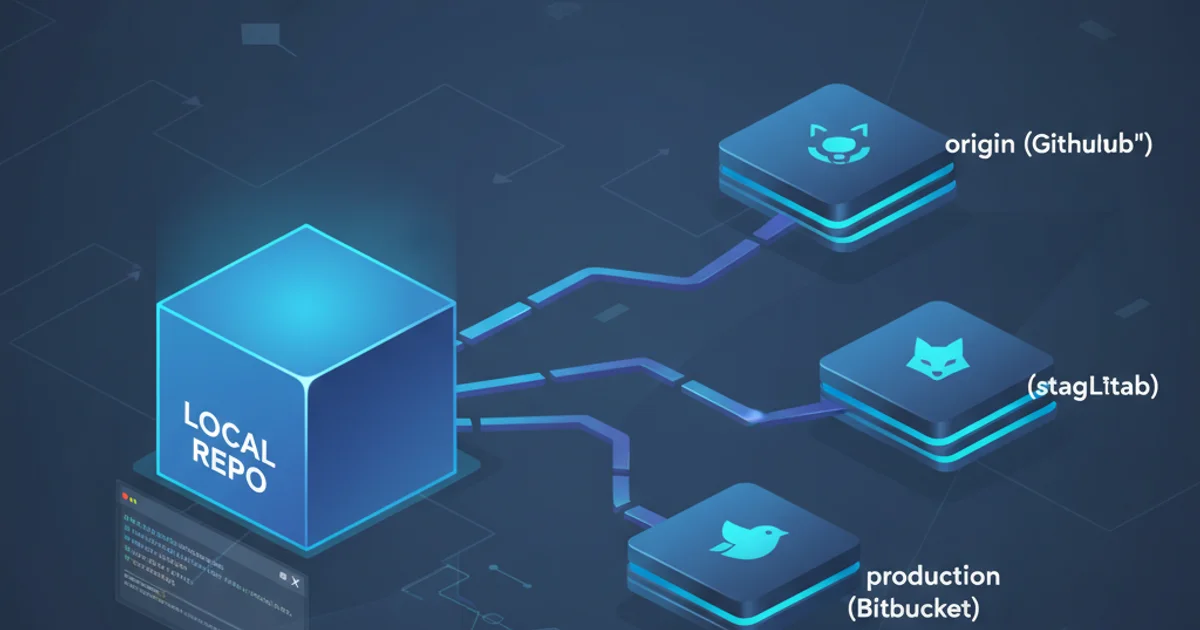What does "git remote" mean?
Categories:
Understanding 'git remote': Managing Your Remote Repositories

Explore the 'git remote' command, its purpose in Git workflows, and how to effectively manage connections to remote repositories for collaborative development.
In the world of Git, collaboration and sharing code are fundamental. While your local repository tracks your changes, the 'git remote' command is your gateway to interacting with other repositories hosted on platforms like GitHub, GitLab, or Bitbucket. It allows you to manage the connections to these external versions of your project, enabling you to push your changes, pull updates from others, and keep your local work synchronized with the team's progress.
What is a Git Remote?
A Git remote is essentially a bookmark for another Git repository. It's a shorthand name that refers to a specific URL where a copy of your project lives. When you clone a repository, Git automatically sets up a remote named 'origin' pointing to the URL you cloned from. This 'origin' is the default remote that Git will interact with when you use commands like git push or git pull without specifying another remote.
graph TD
A[Local Repository] -->|Tracks| B(Local Branches)
A -->|Configured with| C[Remote 'origin']
C -->|Points to| D(Remote Repository URL)
D -->|Hosted on| E(e.g., GitHub, GitLab)
B -->|Push/Pull| CRelationship between local repository, remote, and remote repository.
Common 'git remote' Operations
The git remote command offers a suite of subcommands to manage your remote connections. Understanding these operations is crucial for effective collaboration and repository management.
# List all configured remotes
git remote -v
# Add a new remote
git remote add <name> <url>
# Remove a remote
git remote remove <name>
# Rename a remote
git remote rename <old_name> <new_name>
# Change a remote's URL
git remote set-url <name> <new_url>
# Fetch updates from a specific remote
git fetch <remote_name>
Essential 'git remote' commands for managing connections.
git remote -v to verify the URLs associated with your remotes. This helps prevent pushing to or pulling from the wrong repository.Why Multiple Remotes?
While 'origin' is the most common remote, you might find yourself needing to configure multiple remotes. This is particularly useful in scenarios such as:
- Forking Workflows: When you fork a repository, you'll have 'origin' pointing to your fork, and you might add the original repository as an 'upstream' remote to pull updates from.
- Multiple Deployment Targets: You might have different remotes for staging, production, or different client environments.
- Collaborating with Specific Teams: In large projects, different teams might maintain their own remote repositories, and you might need to interact with several of them.
graph TD
A[Developer's Local Repo]
B[Developer's Fork (Origin)]
C[Original Project (Upstream)]
D[Staging Server Remote]
A -->|Pushes/Pulls| B
A -->|Pulls from| C
A -->|Pushes to| D
B -->|Forked from| CExample of a Git workflow with multiple remotes.
git push, git pull, and git fetch commands to avoid ambiguity.